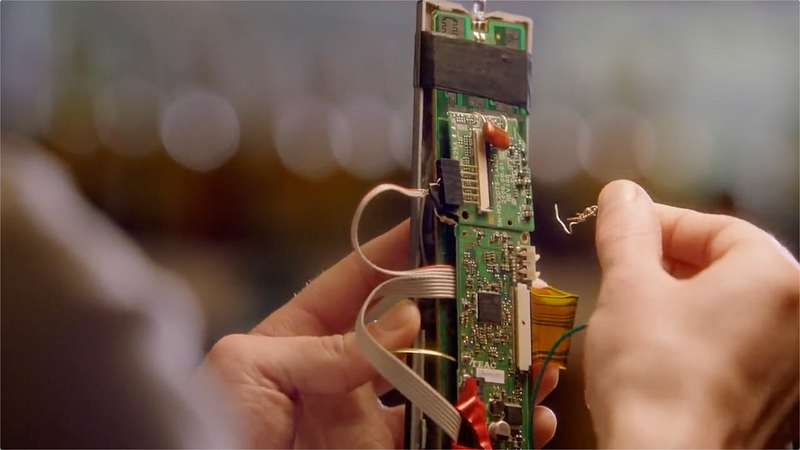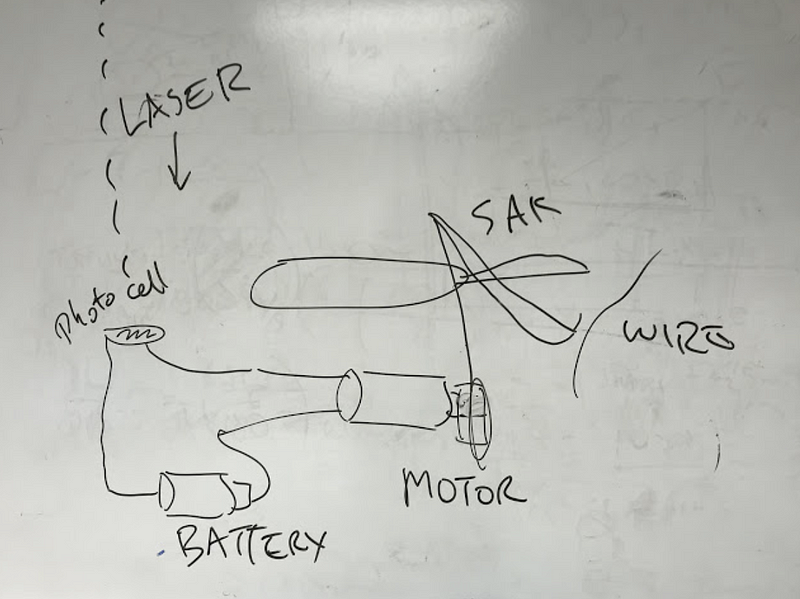MacGyver's Ingenious Science: Exploring Season 2 Episode 12
Written on
Chapter 1: The Photophone
Before diving into the scientific aspects presented in this episode, let me share my thoughts on the storyline. The plot was engaging, and I particularly appreciated the flashbacks featuring MacGyver and Jack. Now, let's discuss some fascinating science.
The concept of the photophone is genuinely remarkable. This invention indeed represents an early concept of telephony. Here’s how it operates: you need a focused light source, which can be achieved using a mirror to reflect sunlight. While a parabolic mirror is more effective, a standard mirror will suffice. By speaking into the mirror, your voice alters the intensity of the reflected light, mimicking the sound wave patterns.
To capture this light, you can utilize an electrical device such as a solar panel, photo diode, or photo resistor, which converts the light variations into an electrical current that corresponds to your voice. This current can then be transmitted to a speaker.
In MacGyver's version, he connects a microphone to a porch light, allowing the microphone to modulate the light’s brightness. However, it's essential to use an LED bulb for this to work effectively, as incandescent bulbs cannot adjust brightness quickly enough to keep up with sound frequencies.
Another consideration is the power source: if MacGyver connects to an AC line, it might complicate the setup. Nonetheless, the concept remains highly feasible.
On the receiving end, Riley utilizes a police car's light as her transmitter. Again, an LED light is crucial for performance, particularly since the car operates on DC. The primary challenge is aligning the receiver to detect the light's varying brightness in daylight, where multiple light sources exist. Using a lens to focus on the detector would significantly enhance performance.
Now, if you're inspired to build your own photophone, it's quite doable! Let’s start with the receiver: the simplest method involves connecting a small solar panel to an amplified speaker.
I sourced my solar panel from a garden light, which charges during the day to illuminate at night. I repurposed an old unit that had a faulty battery.
Next, I attempted to create the transmitter using a laser for better aim. While it mostly functioned, it presented a few challenges.
For a clearer explanation, check out this video.
This project is on my to-do list for improvement, but it definitely ranks among my Top 10 MacGyver Hacks!
Chapter 2: Gum Wrapper Fire Starter
In this episode, MacGyver ingeniously uses a foil gum wrapper connected to a battery to create a short circuit. This raises two questions: Is a gum wrapper a conductor? While they may not be pure aluminum, many wrappers likely conduct electricity.
The second question is whether it generates enough heat. I believe it would heat up sufficiently, even with a small battery. This method is worth trying, and I’ll add it to my experimental list.
Section 2.1: Creating a Non-Contact Voltage Probe
MacGyver devises a clever probe to locate wires behind walls, referred to by Jack as a "doohickey."

This prop is impressive for several reasons: its aesthetic appeal, the combination of various components, and its non-specific nature, allowing for plausible functionality.
The probe operates by detecting electric fields, which create a minuscule voltage across a capacitor. I intend to build a simple version of this for fun.
Chapter 3: Kitchen Chemistry for Explosive Detection
MacGyver accurately points out that most explosives contain nitrogen. By measuring nitrogen levels, one can estimate the type of explosive present.
Household items can serve as chemical detectors. For example, you can create a pH indicator using cabbage juice, which changes color based on acidity levels.
Chapter 4: Laser-Based Bomb Disarming
In a thrilling scenario, MacGyver must disarm two bombs simultaneously. The solution involves using a laser to trigger two identical cutters at once. A beam splitter divides the laser beam into two, which is crucial for this hack.
For the cutting mechanism, a photocell acts as the switch. Here’s a rough diagram illustrating this setup.

Ultimately, while the motors might not cut at precisely the same speed, it's still an exhilarating moment in MacGyver's world of inventive solutions.